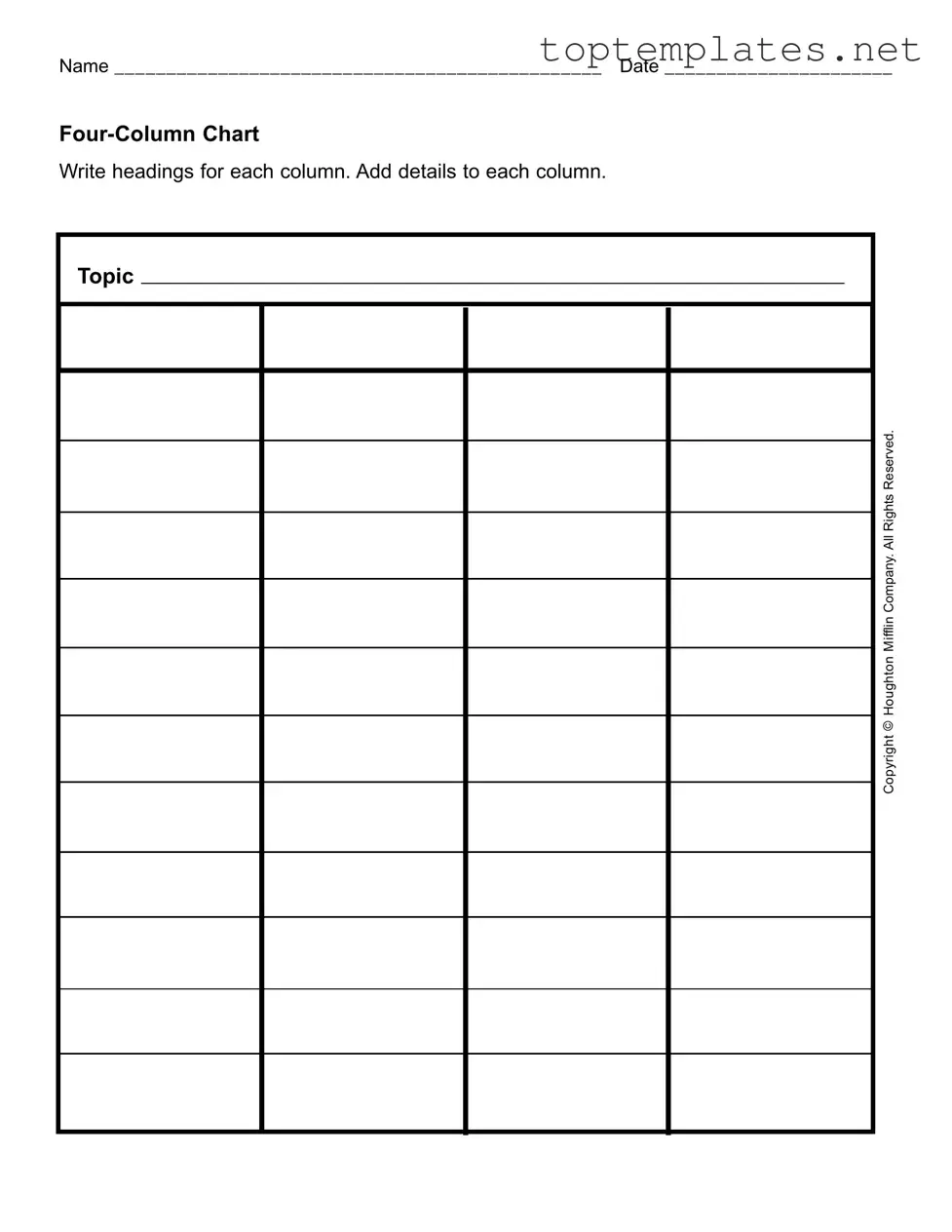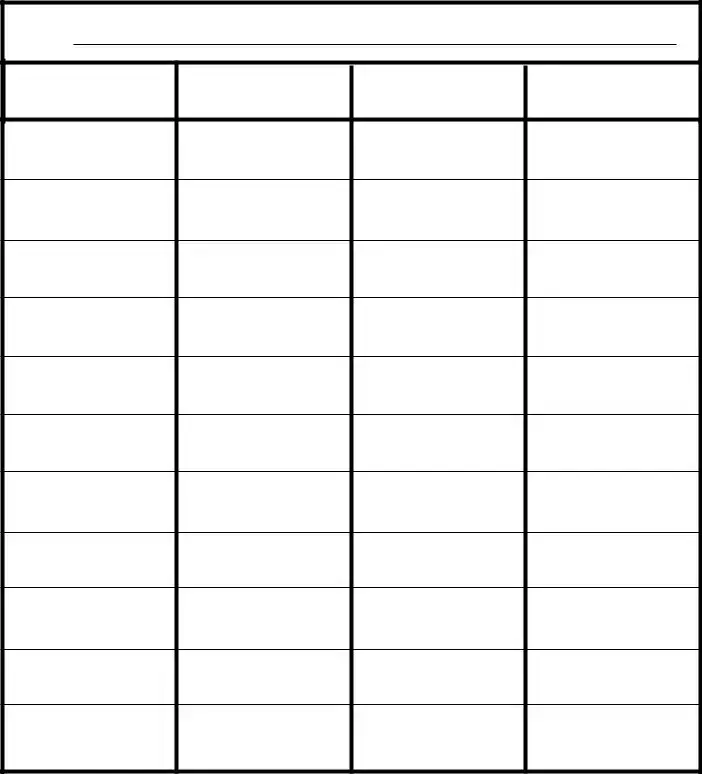What is a Four Column Chart and how is it used?
A Four Column Chart is an organizational tool that enables individuals to categorize and detail information across four different aspects. Each of the four columns is headed by a unique title, allowing for a structured breakdown of topics or ideas. This type of chart is versatile and can be used in various contexts, including educational settings, business meetings, and personal planning. It fosters analytical thinking by encouraging the user to dissect information into distinguishable categories, helping in the thorough exploration and understanding of a given subject.
Can I customize the headings of each column in the Four Column Chart?
Yes, the headings of each column in the Four Column Chart are meant to be customized, providing the flexibility to tailor the chart to meet specific requirements or objectives. This feature allows for a broad range of applications, from categorizing business strategies to organizing academic notes. The key to effective use lies in choosing headings that best represent the divisions of the topic at hand, ensuring that the chart serves as a comprehensive tool for analysis or presentation.
Is the Four Column Chart suitable only for professional use, or can it be used by students as well?
The Four Column Chart is an excellent tool not only for professional use but also for students. Its simplistic yet versatile structure makes it an ideal organizational tool for individuals at any age or stage of learning. For students, it can be particularly beneficial in note-taking, studying for exams, planning research projects, or even organizing personal tasks. Its adaptability to different subjects and ease of use make it a favored choice among educators to enhance students' ability to structure and analyze information.
What are the copyright considerations when using the Four Column Chart?
The specific Four Column Chart referenced here is copyrighted material of the Houghton Mifflin Company. This means that while the format of a four-column chart as a generic tool can be freely used and adapted, the copyrighted version by Houghton Mifflin Company may have restrictions on reproduction or distribution. It is essential to respect copyright laws and only use or reproduce copyrighted materials with permission from the copyright holder. For educational and other non-commercial uses, it is often possible to obtain permission or use materials under fair use provisions, but it is always advisable to check the specific guidelines of the copyright owner.

